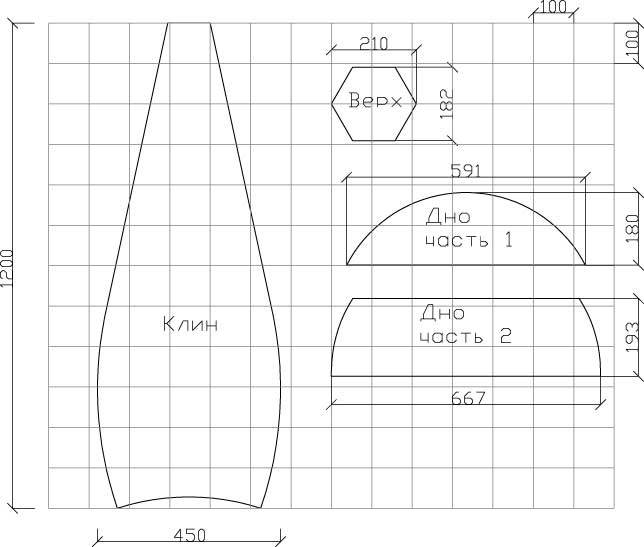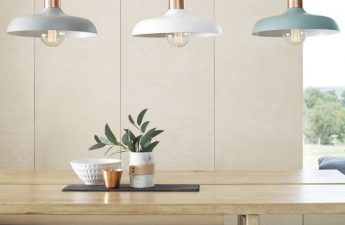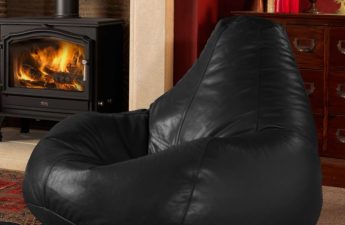Frameless chairs are used quite often,as they help save space in the apartment. If the bean bag chair is made by hand, it can have any shape the owner likes. Often there is a pouf, pear or bean bag shape. Sewing them is not too difficult, and a person with basic sewing skills will cope with such a task. For sewing you will need: The bean bag chair is very comfortable to use, as it takes the shape of the body of the person sitting on it.
The bean bag chair is very comfortable to use, as it takes the shape of the body of the person sitting on it.
- fabric for the inner case;
- fabric for outer cover;
- filler;
- one-piece zipper;
- scissors;
- pins;
- sewing machine;
- pencil or chalk;
- tape measure;
- Ruler;
- thread in tone.
The pattern of such chairs may have minor variationsdifferences - they can be pear-shaped, soccer-ball-shaped (the most complex option, sewn from many hexagons) or rectangular. All other effects can be achieved using color and texture, because armchairs for a child's room or a living room can have the same shape, but look completely different.
Armchair bag: choice of fabric
 Pattern of a bean bag chair.Although such a chair does not have a frame and it is not difficult to make a pattern for it yourself, it is still furniture. Accordingly, the top fabric should be pleasant and durable. The fabric for the inner cover can be any of those that are strong enough to hold the filler. Knowing the basic characteristics of fabrics will help you choose the fabric yourself. Thin, lightweight fabrics such as calico, satin or silk are not suitable, they will quickly become unusable. A bean bag chair can be made of velor - this fabric is soft, fleecy and velvety, slightly reminiscent of artificial fur. Flock is similar in its characteristics to velor, which is easy to clean and wash and has water-repellent properties. A bean bag chair can be made of chenille. This is a natural fabric with the addition of synthetics, durable, easy to care for. The surface of this type of fabric does not form pellets. Synthetic fibers are also found in jacquard - a fabric that looks like boucle. This fabric is durable and easy to wash, and its loops do not unravel from tightening. Artificial suede can be used, which does not fade and does not require special care. Artificial leather is durable and beautiful for such products, which, unlike suede, can have various types of embossing on the surface. And if there are no restrictions in funds, you can use tapestry fabrics. They are durable, antistatic and very beautiful. The width of such fabrics usually ranges from 140-150 cm, which is very convenient for transferring patterns to them. It is better not to consider fabrics of smaller width, since a large footage is required and difficulties with cutting may arise. Fabrics whose width is larger than standard will have too much waste after cutting. Return to contents</a>
Pattern of a bean bag chair.Although such a chair does not have a frame and it is not difficult to make a pattern for it yourself, it is still furniture. Accordingly, the top fabric should be pleasant and durable. The fabric for the inner cover can be any of those that are strong enough to hold the filler. Knowing the basic characteristics of fabrics will help you choose the fabric yourself. Thin, lightweight fabrics such as calico, satin or silk are not suitable, they will quickly become unusable. A bean bag chair can be made of velor - this fabric is soft, fleecy and velvety, slightly reminiscent of artificial fur. Flock is similar in its characteristics to velor, which is easy to clean and wash and has water-repellent properties. A bean bag chair can be made of chenille. This is a natural fabric with the addition of synthetics, durable, easy to care for. The surface of this type of fabric does not form pellets. Synthetic fibers are also found in jacquard - a fabric that looks like boucle. This fabric is durable and easy to wash, and its loops do not unravel from tightening. Artificial suede can be used, which does not fade and does not require special care. Artificial leather is durable and beautiful for such products, which, unlike suede, can have various types of embossing on the surface. And if there are no restrictions in funds, you can use tapestry fabrics. They are durable, antistatic and very beautiful. The width of such fabrics usually ranges from 140-150 cm, which is very convenient for transferring patterns to them. It is better not to consider fabrics of smaller width, since a large footage is required and difficulties with cutting may arise. Fabrics whose width is larger than standard will have too much waste after cutting. Return to contents</a>
Pear chair: sewing process
The pattern is transferred onto graph paper,to ensure evenness. Uneven wedges will spoil the appearance of the product, they must be absolutely identical on both sides. The selected patterns are enlarged to the desired size, if desired, appliques and other additional details are thought out. The upper and lower covers are transferred to the fabric, cut out taking into account the seam allowances. Both the upper and lower parts of the bean bag chair should consist of an upper round part, smaller in size, and a lower one, also round, but larger, and between them, 6 wedges are usually made. All these pattern parts must be sewn together so that in the end you get a bean bag chair. First, all the wedges of the upper and lower covers are stitched together, but a small area is left unsewn. The next step is to stitch both bottoms. After these sewing operations are done with the upper and lower covers in turn, appliques can be stitched onto the bean bag chair, if they are intended. To make the DIY bean bag chair washable as it is used and gets dirty, a zipper is sewn into the remaining unstitched wedge of the top cover. To make the bean bag chair keep its shape, a special polystyrene foam filler is poured into the inner cover to 2/3 of its total volume. After that, the hole is sewn up with a strong seam. The seams on the inner cover should be double and made with strong threads so that the filler does not spill out during use under the weight of the body. But it is permissible to sew a zipper into it too, so that the inner cover can also be washed. All that remains is to put the outer cover on the bean bag chair and zip it up - it is ready for use.


